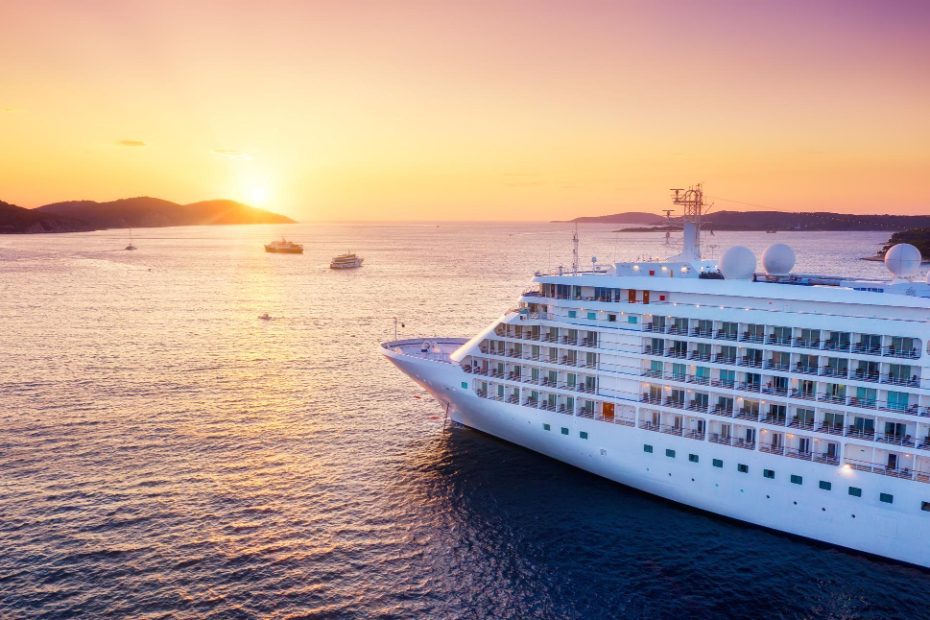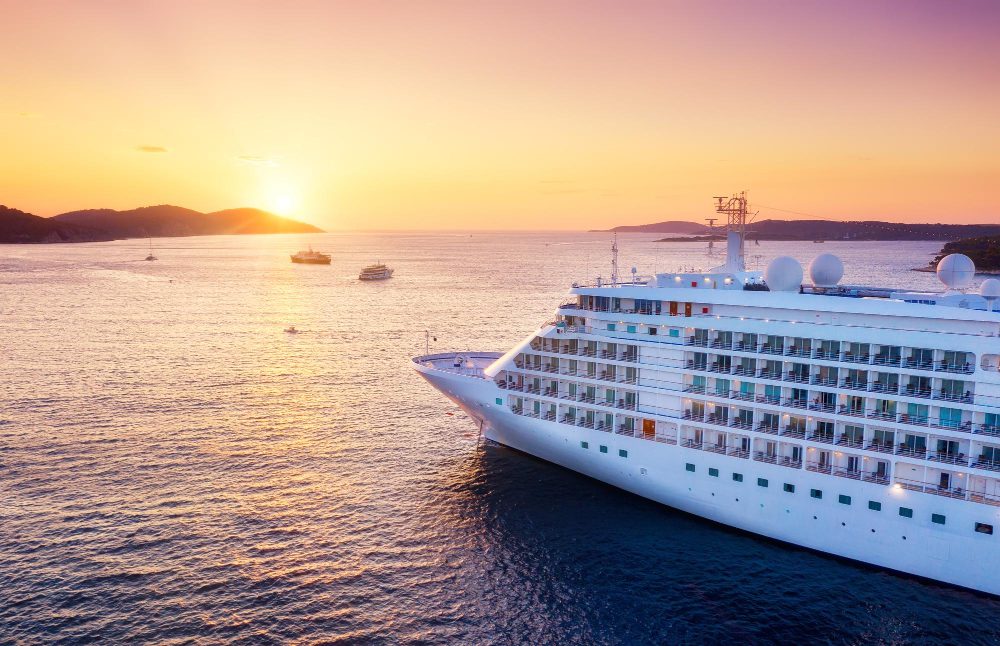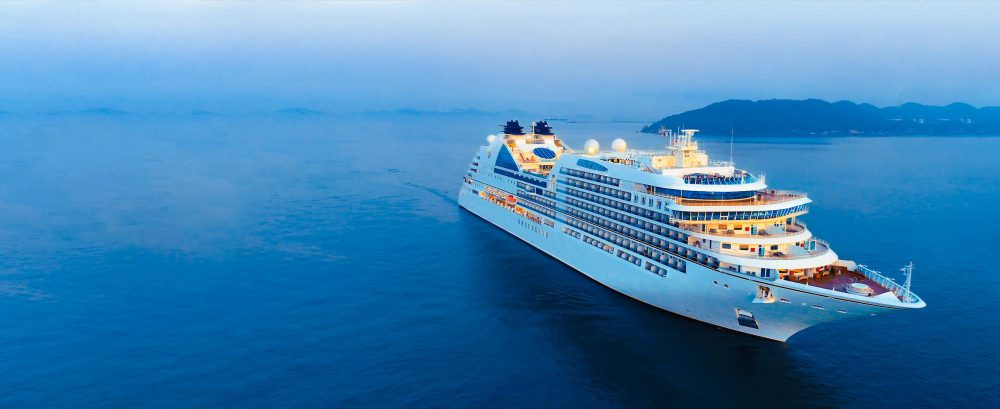What industry is cruise ship?
The cruise ship industry is a significant sector in the global tourism industry. It encompasses companies that own, operate, and manage cruise ships, providing luxurious and leisurely experiences to passengers. Cruise ships are essentially floating resorts that offer a variety of onboard amenities, entertainment options, and shore excursions to travelers.
The Growth of the Cruise Ship Industry
The cruise ship industry has witnessed remarkable growth over the past few decades. According to the Cruise Lines International Association (CLIA), the industry has experienced an average annual passenger growth rate of 6.63% since 1990. This growth can be attributed to several factors, including increased affordability, expanding cruise destinations, and evolving onboard offerings.
More and more people are opting for cruise vacations due to the convenience and value they provide. With all-inclusive pricing, passengers can enjoy accommodations, meals, entertainment, and transportation to multiple destinations, all within a single package. This makes cruises an attractive option for travelers seeking hassle-free and immersive experiences.
The Economic Impact of the Cruise Ship Industry
The cruise ship industry generates significant economic impact in various regions around the world. According to a report by the CLIA, the global cruise industry contributed over $154 billion to the global economy in 2018. This impact was seen in areas such as employment, tourism revenue, and infrastructure development.
Cruise ships create jobs both directly and indirectly. Onboard, there is a need for crew members across various departments, including hospitality, food services, entertainment, and maintenance. Additionally, ports of call benefit from tourism-related activities, such as excursion services, transportation, and retail establishments.
“The cruise ship industry contributed over $154 billion to the global economy in 2018.”
The revenue generated from cruise tourism also supports local economies. When cruise ships dock at ports, passengers often explore the surrounding areas, spending money on activities, dining, and shopping. This influx of tourism revenue helps stimulate local businesses and encourages further development of tourism infrastructure.
Environmental Considerations
While the cruise ship industry brings significant economic benefits, it is not without environmental impact. Cruise ships are known for their large carbon footprints, as they consume massive amounts of fuel and produce emissions. However, the industry has been making efforts to reduce its environmental footprint through technological advancements, such as the use of cleaner fuels and onboard waste management systems.
In recent years, there has been an increased focus on sustainability in the cruise ship industry. Many cruise lines have implemented initiatives to minimize their environmental impact, including reducing single-use plastics, investing in energy-efficient technologies, and implementing stricter waste management practices.
The Future of the Cruise Ship Industry
The cruise ship industry shows no signs of slowing down in terms of growth and innovation. Cruise lines are continuously investing in new ships that feature state-of-the-art amenities, luxurious accommodations, and innovative entertainment options to attract a diverse range of passengers.
Furthermore, with the ongoing development of new cruise destinations and the expansion of existing ones, travelers have more options than ever before. From popular Caribbean routes to exotic expeditions in remote corners of the world, the cruise ship industry offers a vast array of itineraries to suit different preferences and interests.
In conclusion, the cruise ship industry is a prominent sector within the global tourism industry, offering unique vacation experiences to millions of travelers each year. It plays a vital role in driving economic growth, creating employment opportunities, and fostering tourism development in various regions. While there are environmental challenges, the industry is actively working towards achieving greater sustainability. As the industry continues to evolve and adapt to changing consumer demands, it is poised for a promising future.
How big is the cruise line industry?
The cruise line industry is a massive global sector that continues to experience significant growth year after year. From the Mediterranean to the Caribbean, people from all over the world embark on cruises to explore new destinations and enjoy luxury onboard amenities.
Global Revenue
The global revenue of the cruise line industry has been steadily increasing, reaching a staggering figure of over $45 billion in 2019. This substantial revenue growth showcases the industry’s popularity and points towards a promising future.
Passenger Capacity
Cruise ships are becoming larger and more luxurious to accommodate the increasing demand for cruising vacations. The current passenger capacity of the cruise line industry is estimated to be around 28 million passengers annually.
Employment Opportunities
With the industry’s expansion, employment opportunities have also grown significantly. The cruise line industry provides jobs for hundreds of thousands of people worldwide, ranging from ship crews to professionals in various fields such as hospitality, entertainment, and maritime services.
Market Share
The cruise line industry is dominated by a few major players who hold a significant market share. These companies, including Carnival Corporation, Royal Caribbean Cruises Ltd., and Norwegian Cruise Line Holdings, collectively operate hundreds of ships across different brands.
Market Segments
The cruise line industry caters to a diverse range of market segments, including families, couples, solo travelers, and luxury seekers. Each market segment has specific needs and preferences, which cruise lines strive to meet through tailored experiences and itineraries.
Reasons for Growth
Several factors contribute to the continuous growth of the cruise line industry. These include increasing disposable incomes, growing interest in adventure and experiential travel, improved onboard amenities and entertainment options, and the allure of visiting multiple destinations in a single trip.
Challenges
While the cruise line industry has seen impressive growth, it also faces challenges. Environmental sustainability, safety measures, and public health concerns, as highlighted by the COVID-19 pandemic, are among the key challenges that the industry must address to maintain its growth trajectory.
Future Outlook
The cruise line industry is expected to continue its growth in the coming years. As new technologies emerge, ships become more environmentally friendly, and unique travel experiences are offered, the industry will attract even more travelers from across the globe.
“The cruise line industry’s immense growth and global impact make it an exciting sector to watch.”
In conclusion, the cruise line industry is a thriving sector with significant revenue, employment opportunities, and market share. Despite challenges and evolving consumer preferences, the industry continues to grow, enticing travelers with its luxurious experiences and diverse itineraries.
Are Cruise Ships Part of the Hospitality Industry?
The hospitality industry encompasses a wide range of businesses that provide services and accommodations to travelers and guests. While hotels, restaurants, and resorts are typically associated with this industry, the question remains: Are cruise ships also considered part of the hospitality industry?
Cruise Ships and Hospitality
The answer to this question is yes, cruise ships are indeed part of the hospitality industry. Although cruise ships offer a unique experience compared to traditional land-based establishments, they share many similarities with other hospitality businesses.
Similar to hotels and resorts, cruise ships provide accommodations for guests. However, unlike hotels where guests have a fixed room for their stay, cruise ship guests have cabins or staterooms that serve as their temporary homes during the duration of the voyage. These accommodations often come with amenities such as room service, housekeeping, and luxurious amenities.
Cruise ships also offer a wide array of dining options to cater to their guests’ diverse tastes. From buffet-style dining halls to gourmet restaurants, passengers can indulge in a variety of culinary experiences throughout their journey.
The Role of Entertainment
Another important aspect of the hospitality industry that cruise ships embody is entertainment. Just like hotels and resorts, cruise ships provide an abundance of entertainment options to keep guests entertained during their trip. From live performances, musical shows, and casinos to swimming pools, spas, and fitness centers, cruise ships offer a range of activities to cater to different interests and preferences.
Unique Considerations for Cruise Ships
While cruise ships fall under the umbrella of the hospitality industry, they also have unique considerations due to their floating nature and complex operations. For example, cruise ships must comply with maritime safety regulations, navigate international waters, and manage logistics for onshore excursions. These aspects make the cruise ship industry distinctive, requiring specialized expertise.
“Cruise ships offer a unique blend of accommodation, dining, and entertainment that sets them apart from traditional hospitality establishments. However, they still embody the core principles of the hospitality industry by providing exceptional service and creating memorable experiences for guests.”
How Would You Describe the Cruise Industry?
The Growth and Impact of the Cruise Industry
The cruise industry has experienced significant growth and has become a major player in the tourism sector. With its unique offering of luxury accommodations, world-class entertainment, and exotic destinations, cruises have attracted millions of travelers from around the globe.
The impact of the cruise industry on the economy cannot be overstated. According to industry reports, the cruise industry generated over $150 billion in global economic output and supported more than 1.17 million jobs worldwide.
Cruise Ship Amenities and Services
Cruise ships are like floating cities, offering a wide range of amenities and services to cater to the needs and preferences of their passengers. From spacious cabins and fine dining restaurants to swimming pools, spa facilities, and entertainment venues, there is never a shortage of things to do on a cruise ship.
One of the highlights of a cruise experience is the exceptional service provided by the crew members. They go above and beyond to ensure that every passenger has a memorable and enjoyable voyage.
The Diversity of Cruise Destinations
Cruise itineraries cover a diverse range of destinations, from popular coastal cities and tropical islands to remote and lesser-known ports. Passengers can embark on an Alaskan adventure, explore the ancient ruins of the Mediterranean, or soak up the sun on Caribbean beaches.
With such a vast array of destinations to choose from, there is a cruise itinerary to suit every traveler’s taste and preference.
Cruise Industry Challenges
While the cruise industry has enjoyed remarkable success, it has also faced its fair share of challenges. Safety concerns, environmental sustainability, and public health issues have been topics of concern in recent years.
“The cruise industry has made significant strides in addressing these challenges, implementing stricter safety measures, adopting eco-friendly practices, and enhancing health protocols to ensure the well-being of passengers and crew members.”
Future Trends in the Cruise Industry
The future of the cruise industry looks promising, with several emerging trends shaping its trajectory. One notable trend is the focus on sustainability and responsible tourism. Cruise lines are investing in cleaner technologies and reducing their environmental footprint.
Another trend is the growth of expedition cruises, offering unique and immersive experiences in remote and pristine destinations.
What are the 3 segments of the cruise industry?
The cruise industry can be divided into three main segments, each catering to different types of travelers and offering unique experiences. These segments include:
1. Contemporary Cruises
Contemporary cruises are typically the most affordable option and cater to a wide range of travelers. These cruises offer a casual and relaxed atmosphere, with a focus on fun and entertainment. They often feature large ships with extensive onboard amenities such as swimming pools, casinos, and live shows. Contemporary cruises are popular among families, young adults, and those looking for a value-packed vacation.
2. Premium Cruises
Premium cruises are a step up in terms of luxury and amenities compared to contemporary cruises. These cruises offer a more refined experience with higher quality accommodations, dining options, and personalized service. Premium cruise lines often have smaller and more intimate ships, allowing for a more exclusive and intimate atmosphere. They may also offer additional onboard activities such as enrichment programs, spa facilities, and specialty dining experiences. Premium cruises are popular among couples, older adults, and travelers who seek a more upscale vacation.
3. Luxury Cruises
Luxury cruises are the epitome of elegance and opulence. These cruises provide the highest level of service, with an exceptional attention to detail and personalized experiences. Luxury cruise lines offer spacious and luxurious accommodations, gourmet cuisine, and a wide range of exclusive amenities. Ships in this segment are typically smaller, offering a more intimate and indulgent experience. Luxury cruises cater to discerning travelers who are willing to pay a premium for a truly luxurious and unforgettable vacation.
It’s important to note that these segments may overlap in some cases, and cruise lines within each segment may offer a range of itineraries and experiences to appeal to different preferences. Ultimately, the choice of which segment to book will depend on individual preferences, budget, and desired level of luxury.
Is the cruise industry in decline?
The cruise industry has experienced significant growth in recent years, but there are concerns about whether this trend will continue or if the industry is entering a decline. Let’s examine some of the key factors influencing the current state of the cruise industry.
1. Changing consumer preferences
Consumer preferences are shifting towards more unique and immersive travel experiences. While traditional cruises offer a comfortable and convenient way to explore multiple destinations, some travelers are seeking more authentic interactions with local cultures and off-the-beaten-path adventures. This shift in preferences may impact the demand for traditional cruise vacations.
2. Economic factors
Economic conditions play a crucial role in the cruise industry’s performance. During times of economic downturn, consumers may cut back on luxury expenditures, including cruise vacations. A decline in disposable income can lead to decreased demand for cruises, affecting both new bookings and onboard spending.
3. Environmental concerns
Environmental issues have also come to the forefront in recent years, with increased focus on sustainable tourism practices. Cruise ships’ impact on the environment, such as air and water pollution, has been a topic of concern. If stricter regulations are enforced, it could potentially increase operating costs for cruise lines and affect their profitability.
4. Competition within the travel industry
The cruise industry faces fierce competition from other segments of the travel industry, including all-inclusive resorts, adventure tourism, and even luxury train journeys. These alternative options provide similar amenities and experiences, making it essential for the cruise industry to continually innovate and differentiate itself from competitors.
5. Aging demographics
The aging population is a significant demographic challenge for the cruise industry. Cruises have traditionally appealed to older adults who have more time and disposable income to spend on travel. However, attracting younger generations and families with children is crucial for sustained growth. Cruise lines are adapting by offering more family-friendly amenities and activities to appeal to a broader range of travelers.
6. Technological advancements
Technology has rapidly changed the way people research and book travel experiences. Online travel agencies and price comparison websites have made it easier for consumers to find the best deals, potentially impacting the cruise industry’s profitability. Additionally, the rise of social media has given consumers a platform to share their negative experiences, potentially influencing others’ opinions about cruising.
7. COVID-19 pandemic impact
The ongoing COVID-19 pandemic has had a severe impact on the cruise industry. With widespread cancellations, travel restrictions, and health concerns, many cruise lines have faced financial challenges. The industry is working towards implementing enhanced health and safety protocols to restore consumer confidence and revive the industry.
Conclusion
In conclusion, despite their distinct characteristics, cruise ships are indeed part of the hospitality industry. They provide accommodations, dining options, and entertainment experiences similar to other businesses within the industry. While their operations may differ due to maritime regulations and unique considerations, cruise ships embrace the principles of hospitality to create unforgettable experiences for their guests.
The cruise industry is a dynamic and thriving sector that offers a unique vacation experience to travelers worldwide. With its luxurious amenities, diverse destinations, and continuous innovation, it continues to captivate the hearts of millions of passengers.
While the cruise industry may face challenges, it is not necessarily in a state of decline. The industry has shown resilience in the past and has the potential to adapt to changing consumer preferences and overcome economic and environmental obstacles. By embracing innovation, targeting new demographics, and addressing concerns, the cruise industry can continue to thrive in the future.



